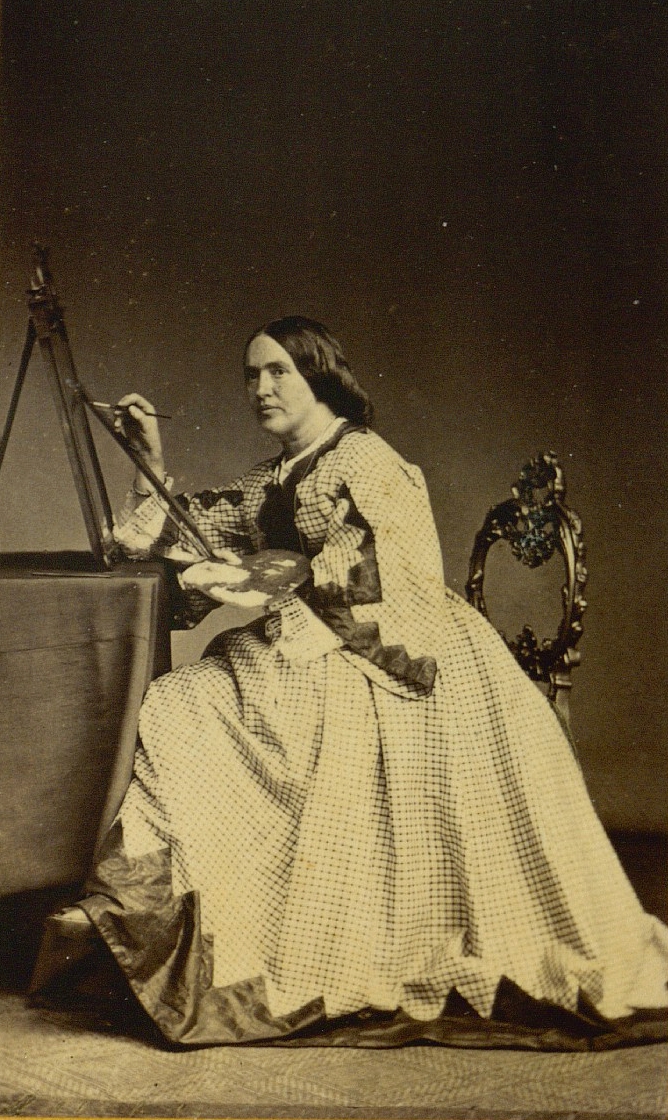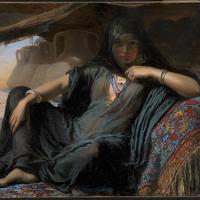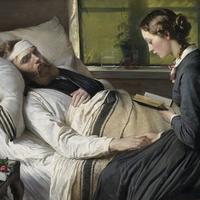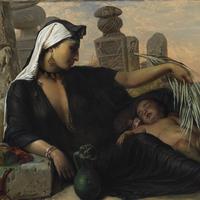More about Elisabeth Baumann
Works by Elisabeth Baumann

Contributor
This piece was somewhat of a detective's endeavor, as the encyclopedias have more information on Jerichau-Baumann's husband Jens and a few other male family members than they do on her.
Critics and curators have used every trick in the book to bury any memory of her until very recently. As is often true of women in European art, the art critical industrial complex ignored her for a hot minute, because they were too busy counting the hairs on Picasso's chest. Nevertheless, Jerichau-Baumann is a glimmering example of a person who really tries to live up to the principles of her era, which meant that she worked as hard as she possibly could.
Born to German parents in Warsaw, Jerichau Baumann married a Danish man and became a beloved figure of Danish national culture. In London, where she lived and worked for several years, she hobnobbed with the hereditary elite, managed her children's affairs, and wrote letters to her husband in Danish about her life. A Danish website published a large number of her letters, lovingly transcribing them as well as giving us access to the original images of her beautiful handwriting. I am familiar with cheese danishes, but not Danish, so I enlisted the help of a translation service that one of the internet giants offers for free, which means they scrape the internet for bits of translations that other people are doing and "borrow" them without compensation. This raises all kinds of ethical problems, aside from the fact that the translations often come out sounding like Baby Yoda, but some parts of Jerichau-Baumann's letters are still great, no matter how broken the auto-translator. For example, in 1871 she mentions that the Earl of Dudley and Georgina Elizabeth Ward, Countess of Dudley, visited her, and that these are the necessary kinds of connections that she needs in order to reach "the goal." Unlike many artists, she sees the goal of her painting as a goal for her entire family, not the realization of a selfish desire. The goal would have been to have more than fifteen minutes of fame, and perhaps she would be pleased that attention on her would wane, but then pick up again generations later.
So, Jerichau-Baumann writes, and I paraphrase from the odd translation, these hereditary bigshots are visiting, and it's all quite exciting and grand, really, and London is so very marvelous, and the Earl will make the connections we need to reach our goal, but still I work, like a horse on a treadmill. Initially, I thought that was quite a sad, capturing image, and, of course, I pictured a horse on a home treadmill. Then I looked it up and found out that nobody had those until a hundred years later, so I looked up the Danish word, Trædemølle, and it means a milling wheel for grinding grain. Originally, people had to walk around in a circle to make flour, and then they started using horses and oxen for it. There is no job more tedious, and this is how Jerichau-Baumann describes her work.
The artistic results of Jerichau-Baumann's workhorse mentality are awesome, even though a lot of it is an embarrassing escapade in all the worst stereotypes of Orientalism. The Danish royals helped her connect with British nobility, and her royal friends wrote letters with which she convinced the bouncers at various harems in Egypt and the Ottoman Empire to let her go in and hang out. I assume she made up a story to align these experiences with her strict churchgoing worldview. "You have to descend to the deepest depths to know the highest heights," she would have said.
Visually, she developed her mastery of Johannes Vermeer's techniques while raising seven surviving children. In short, she worked it. So much so, that her pal Hans Christian Andersen wrote a biography about her, some time when he wasn't busy writing shocking and magical stories for children.
Sources
- "1871-07-01." Elisabeth Jerichau Baumann, http://ejb.ktdk.dk/d/82K2?q=jerichau%20Jerichau Baumann.
- Linvald, Charlotte Marie Steffen. "Anmeldelse: Sine Krogh og Birgitte Fink: Kilder til dansk kunsthistorie: Breve fra London. Elisabeth Jerichau Baumann og den victorianske kunstverden." Periskop–Forum for kunsthistorisk debat (2019): 131-132.
- Lumley, Benjamin. The Earl of Dudley, Mr. Lumley, and Her Majesty's Theatre: A Narrative of Facts Addressed to the Patrons of the Opera, His Friends, and the Public Generally. London: Bosworth & Harrison, 1863.
- Kuehn, Julia. "Elisabeth Jerichau-Baumann, 'Egypt 1870.'" Victorian Literature and Culture 38, no. 1 (2010): 257-266.
Featured Content
Here is what Wikipedia says about Elisabeth Jerichau-Baumann
Anna Maria Elisabeth Lisinska Jerichau-Baumann (21 November 1819 – 11 July 1881) was a Polish-Danish painter. She was married to the sculptor Jens Adolf Jerichau.
Check out the full Wikipedia article about Elisabeth Jerichau-Baumann













